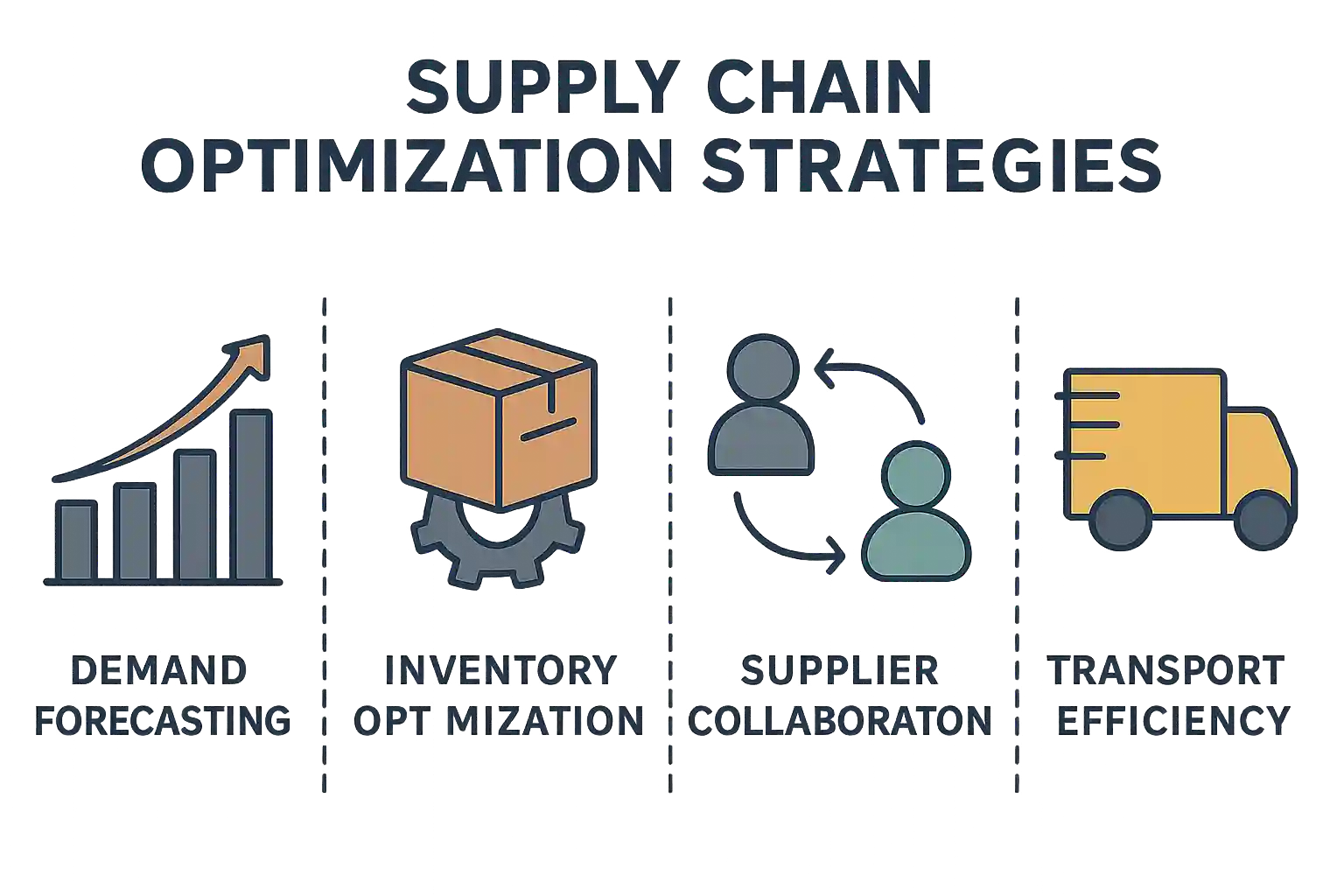Optimizing the shoe supply chain can save costs
Supply chain optimization is a powerful tool for businesses. It can significantly reduce costs and boost profit margins. Understanding its importance is key to staying competitive.
Optimizing the supply chain involves strategic planning and execution. It includes supplier diversification, efficient inventory management, and shipment consolidation. These strategies help streamline operations and improve efficiency.
Businesses that invest in supply chain optimization see long-term benefits. They enjoy improved customer satisfaction and reduced operational risks. Embracing these practices is essential for sustainable growth.
Why optimize the supply chain?
Understanding why to optimize the supply chain is crucial for any business. It helps in maintaining a competitive edge in the market.
By optimizing the supply chain, companies can reduce costs and improve efficiencies. This leads to better profit margins and operational effectiveness.
Some key benefits of supply chain optimization include:
Enhanced customer satisfaction through timely deliveries.
Reduced operational risks and fewer disruptions.
Long-term cost savings from improved efficiencies.
Optimized supply chains are vital for tackling challenges and seizing market opportunities. Embracing these practices ensures business sustainability and growth.
Key strategies for supply chain optimization
Implementing effective strategies can greatly enhance supply chain performance. These strategies help in reducing costs while boosting efficiency.
Key strategies include:
Supplier diversification to mitigate risks.
Efficient inventory management to cut holding costs.
Shipment consolidation for lowering transportation expenses.
Organizations must focus on technology adoption to streamline operations. Data analytics and automation play a pivotal role in achieving supply chain excellence. With these strategies, businesses can improve adaptability and resilience.

Supplier diversification
Supplier diversification is crucial in minimizing dependency on a single source. Relying on multiple suppliers reduces risks associated with disruptions.
Key actions include:
Identifying potential suppliers for critical components.
Establishing relationships with diverse suppliers.
Evaluating suppliers based on reliability and cost-effectiveness.
This approach ensures continuity of supply and better negotiation power. Businesses can achieve greater flexibility by spreading procurement across various sources.
Efficient inventory management
Efficient inventory management helps cut down on unnecessary expenses. It ensures products are available when needed without overstocking.
Best practices include:
Implementing just-in-time inventory systems.
Using demand forecasting for accurate planning.
Conducting regular audits of inventory levels.
By optimizing inventory, companies can decrease holding costs and improve cash flow. This approach also prevents stockouts, boosting customer satisfaction.
Shipment consolidation
Shipment consolidation combines orders to reduce transportation costs. Grouping shipments optimizes space and lowers fuel consumption.
Steps to consolidate shipments include:
Analyzing shipment data to identify consolidation opportunities.
Coordinating deliveries to maximize load efficiency.
Partnering with logistics providers for better rates.
Consolidation results in fewer trips and a reduced carbon footprint. This strategy improves cost efficiency while supporting sustainability efforts.
How to optimize the supply chain: Practical steps
Practical steps for supply chain optimization involve a combination of strategic planning and technology adoption. Businesses need to focus on continuous improvement and agility.
To optimize effectively:
- Conduct regular audits to identify inefficiencies and areas for improvement.
- Invest in technology to enhance automation and data analysis.
- Train employees in modern supply chain practices for better implementation.
Fostering collaboration across functions is also vital. This ensures alignment with business goals, resulting in a more responsive and robust supply chain. Embracing these steps can lead to sustainable success and cost savings.
Conclusion: The long-term value of supply chain optimization
Optimizing the supply chain offers significant benefits, including sustained cost savings and efficiency. By investing time and resources in optimization, businesses can gain a competitive edge.
A well-optimized supply chain doesn’t just reduce costs; it also enhances customer satisfaction through timely deliveries. Continuous improvement strategies ensure businesses are well-prepared for future challenges, securing long-term growth and success.
If you still want to know more ways to save factory costs, this article will tell you. We are looking forward to the production of our next blog.
